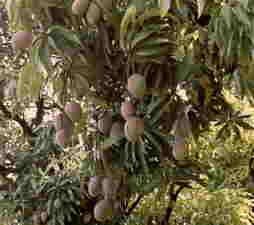Agriculture
The Agriculture sector continues to play a central role in Pakistan’s economy. It is the second largest sector, accounting for over 21 percent of GDP, and remains by far the largest employer, absorbing 45 percent of the country’s total labour force. Nearly 62 percent of the country’s population resides in rural areas, and is directly or indirectly linked with agriculture for their livelihood. The Agriculture sector’s strong linkages with the rest of the economy are not fully captured in the statistics. While on the one hand, the sector is a primary supplier of raw materials to downstream industry, contributing substantially to Pakistan’s exports, on the other, it is a large market for industrial products such as fertilizer, pesticides, tractors and agricultural implements. acres of land is cultivated and another 9.05 million acres are lying as cultivable waste in different parts of the province. Cotton and rice are important crops. They are the cash crops that contribute substantially to the national exchequer. Attaining self-sufficiency in agriculture has shifted the focus of the strategies towards small and medium farming, stress on barani areas, farms-to-market roads, electrification for tube-wells and control of water logging and salinity. Punjab has also more than 48 thousand industrial units. The small and cottage industries are in abundance. There are 39,033 small and cottage industrial units. The number of textile units is 11,820. The ginning industries are 6,778. There are 6,355 units for processing of agricultural raw materials including food and feed industries. Lahore and Gujranwala Divisions have the largest concentration of small light engineering units. The district of Sialkot excels in sports goods, surgical instruments and cutlery goods. Punjab is also a mineral rich province with extensive mineral deposits of coal, rock-salt, dolomite, gypsum, silica-sand. The Punjab Mineral Development Corporation is running over a dozen economically viable projects.

Mango City
The Persian couplet left translates ""With four rare things Multan abounds - Gard (dust), Garma (scorching summers), Gada (beggars) and Gooristan (graves)." One has to visit Multan to find out how true this saying goes about Multan. The very hot weather of Multan makes it ideal for the growth of crops like cotton and the most delicious mangoes in the world. Although, many countries like China and Brazil are entering into mango export, but those with a taste can always make out the difference between the mangoes from Multan-Pakistan and others. The special qualities of "Chaunsa, Anwar Ratol and Langra" are world famous for their tastes, flavour and sweetness. Shujabad tehsil of Multan produces some of the best mangoes in Pakistan. Multan an ancient city represents oldest civilizations in the world and a trade hub of medieval Indian Subcontinent. Multan region is crown of Indus Valley Civilization and is being continuously inhabited for at least 5000 years. A large collection of sufi shrines and a multitude of sufi mystics has earned the city its name of “City of Saints”. Modern city of Multan covers an area of 3,721 square kilometers, comprising four tehsils: Multan City, Multan Sadar, Shujabad and Jalalpur Pirwala. Due to its unique geographical location, the city lies almost in the center of Pakistan. Multan is called “The Mango city” for a reason, as its stiflingly hot climate provides the fruit a perfect environment to ripe into juiciest, thickest and the most aromatic mangoes in the world. Some popular varieties of Multani mangoes are ‘Anwar Rattol’, ‘Langra’, ‘Dusehri’ and ‘Chaunsa’. Each of them is different in taste, size and quality of pulp. The major crops of Multan include wheat, cotton, sugarcane, rice, maize, sunflower, fodder crops etc., minor crops involve rapeseed and mustard, pulses i.e. chickpea, lentil, mung bean and mush bean etc., whereas mango, citrus, guava, date-palm, pomegranate, falsa, jujube, banana, strawberry and grapes are among popular fruits grown in the area. Multani Sohan Halwa, made of sugar, desi ghee and wheat flour and ornamented with nuts and pistachios, is a special dessert, that every visitor to Multan takes with him as a compulsory delight. Beautiful blue tiles, blue pottery, Multani Khussa (shoes), embroidered clothes for men and women and camel skin wares are some other designated products of Multan

Agriculture Views
Agriculture people are so harwoking this basic source of incom.Agriculture and art of cuktivating plants and live Agriculture was the key development in rise of sendenty Civilation, ,
